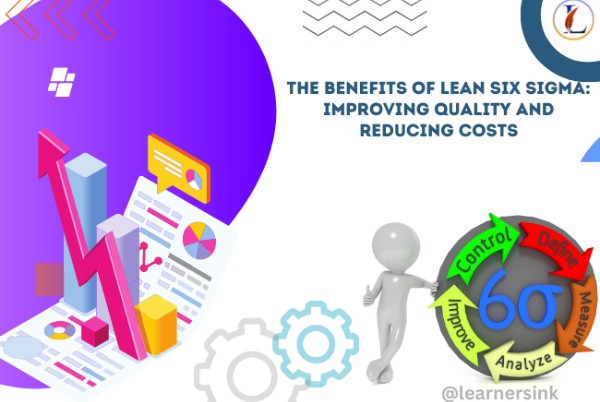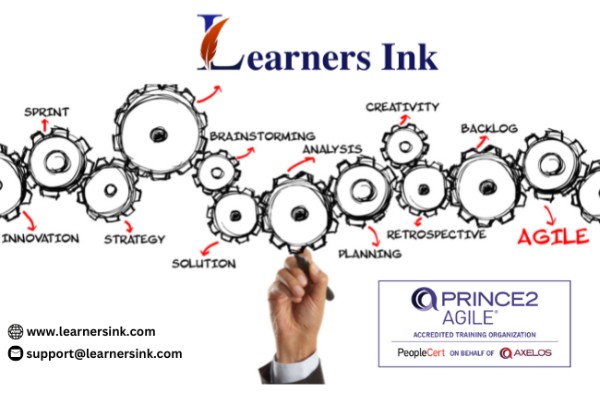The Benefits of Lean Six Sigma: Improving Quality and Reducing Costs

The Benefits of Lean Six Sigma: Improving Quality and Reducing Costs
Introduction
Definition of Lean Six Sigma
Lean Six Sigma is a methodology that combines the principles of Lean manufacturing and Six Sigma to improve business processes and eliminate waste, defects, and variability. Lean Six Sigma aims to increase customer satisfaction, reduce costs, and enhance productivity by using data-driven decision-making and continuous improvement methods.
Importance of Lean Six Sigma
Lean Six Sigma has become increasingly important in today's competitive business environment. Many organizations have implemented Lean Six Sigma to improve their operations and stay ahead of the competition. Here are some reasons why Lean Six Sigma is important:
Improves quality: Lean Six Sigma helps organizations improve the quality of their products and services by identifying and eliminating defects and errors. This results in increased customer satisfaction and loyalty.
Reduces costs: By eliminating waste and inefficiencies, Lean Six Sigma helps organizations reduce costs and increase profitability.
Increases productivity: Lean Six Sigma identifies bottlenecks and other process inefficiencies that hinder productivity and provides solutions to eliminate them.
Enhances employee engagement: Lean Six Sigma involves employees at all levels in the improvement process, which can increase their engagement and job satisfaction.
Drives innovation: Lean Six Sigma encourages a culture of continuous improvement, which can lead to new ideas and innovations that drive business growth.
Understanding Lean Six Sigma
What is Lean? Lean is a philosophy and methodology that focuses on maximizing value and minimizing waste in processes. It originated from the Toyota Production System in the 1950s and has since been applied to various industries. The goal of Lean is to create more value for customers while using fewer resources. The five core principles of Lean are:
• Define value from the customer's perspective
• Map the value stream to identify all the steps in the process • Create flow by eliminating waste and reducing variability • Establish pull by producing only what the customer wants • Pursue perfection by continuously improving the process
What is Six Sigma? Six Sigma is a data-driven methodology that focuses on eliminating defects and reducing variability in processes. It was developed by Motorola in the 1980s and has since been widely adopted by many organizations. The goal of Six Sigma is to achieve a level of quality that results in no more than 3.4 defects per million opportunities. Six Sigma follows a structured approach called DMAIC (Define, Measure, Analyze, Improve, Control) to identify and eliminate the root causes of defects. How do Lean and Six Sigma work together? Lean and Six Sigma work together to achieve common goals of improving quality, reducing costs, and increasing customer satisfaction. Lean focuses on identifying and eliminating waste in processes, while Six Sigma focuses on reducing variability and defects. Together, they provide a comprehensive approach to process improvement. The integration of Lean and Six Sigma is often referred to as Lean Six Sigma. It combines the principles of both methodologies and provides a framework for identifying and eliminating waste, reducing variability, and improving quality. Lean Six Sigma uses the DMAIC process to identify and analyze problems and then uses Lean tools and techniques to eliminate waste and create flow. The result is a streamlined process with reduced defects and improved efficiency.
Benefits of Lean Six Sigma
Improving Quality Quality improvement is the process of identifying and eliminating defects or errors in products, services, or processes to improve customer satisfaction. The goal is to achieve a level of quality that meets or exceeds customer expectations. Quality improvement can result in many benefits, such as increased customer loyalty, improved reputation, and reduced costs. How Lean Six Sigma improves the quality Lean Six Sigma provides a data-driven approach to quality improvement. It helps organizations identify the root causes of defects or errors and provides a structured methodology to eliminate them. Here are some ways that Lean Six Sigma improves quality: a. Identifies the Voice of the Customer (VOC): Lean Six Sigma starts with understanding the needs and expectations of the customer. By identifying the VOC, organizations can prioritize their efforts to meet customer needs and expectations. b. Reduces variation: Variation in processes can lead to defects or errors. Lean Six Sigma identifies and reduces variation to improve the consistency and reliability of the process. c. Uses data to make decisions: Lean Six Sigma uses data to make decisions and measure the effectiveness of the improvement process. By using data, organizations can identify trends, root causes, and opportunities for improvement. d. Encourages continuous improvement: Lean Six Sigma is a continuous improvement process that encourages organizations to strive for excellence. By continuously improving the process, organizations can maintain high levels of quality and customer satisfaction. Overall, Lean Six Sigma improves quality by focusing on customer needs, reducing variation, using data to make decisions, and encouraging continuous improvement. This results in increased customer satisfaction, improved reputation, and reduced costs.
Reducing Costs
Cost reduction is the process of identifying and eliminating unnecessary expenses or waste in a business operation. The goal is to reduce costs while maintaining or improving quality, customer satisfaction, and profitability. Cost reduction can result in many benefits, such as increased efficiency, improved cash flow, and higher profits. How Lean Six Sigma reduces costs Lean Six Sigma provides a structured approach to reducing costs. It helps organizations identify and eliminate waste, inefficiencies, and non-value-added activities. Here are some ways that Lean Six Sigma reduces costs: a. Identifies waste: Lean Six Sigma identifies the eight types of waste (TIMWOODS): Transportation, Inventory, Motion, Waiting, Overproduction, Overprocessing, Defects, and Skills. By identifying and eliminating waste, organizations can reduce costs and improve efficiency. b. Reduces cycle time: Lean Six Sigma reduces cycle time by eliminating non-value-added activities, reducing wait times, and increasing throughput. This results in faster delivery times, improved customer satisfaction, and reduced costs. c. Increases productivity: Lean Six Sigma increases productivity by eliminating bottlenecks, reducing downtime, and optimizing resource utilization. This results in improved efficiency and reduced costs. d. Improves quality: Lean Six Sigma improves quality by reducing defects and errors, which reduces costs associated with rework, scrap, and warranty claims. e. Uses data to make decisions: Lean Six Sigma uses data to make decisions and measure the effectiveness of cost reduction efforts. By using data, organizations can identify areas for improvement and prioritize their efforts.
Conclusion:
Lean Six Sigma is a powerful methodology for improving quality and reducing costs in organizations. By using a data-driven approach and a structured methodology, Lean Six Sigma provides benefits, including: • Improved customer satisfaction • Reduced defects and errors • Increased efficiency and productivity • Reduced cycle time • Reduced costs • Improved cash flow and profitability • Enhanced reputation and brand image
Final thoughts on implementing Lean Six Sigma Implementing Lean Six Sigma requires commitment, dedication, and a willingness to change. Organizations that successfully implement Lean Six Sigma can reap the benefits of improved quality, reduced costs, and increased customer satisfaction. However, implementing Lean Six Sigma requires a cultural shift towards continuous improvement and a focus on data-driven decision-making. To implement Lean Six Sigma, organizations should start by identifying a project team and selecting a project with high impact and visibility. The project team should receive training on Lean Six Sigma tools and methodology, and they should use a structured approach to define the problem, measure performance, analyze data, improve processes, and control the improvements. In addition, organizations should establish a culture of continuous improvement, where employees are encouraged to identify and eliminate waste, and they are rewarded for their contributions to improving quality and reducing costs. In conclusion, Lean Six Sigma provides many benefits for organizations that are willing to embrace change and focus on continuous improvement. By using a structured approach, organizations can achieve improved quality, reduced costs, and increased customer satisfaction, which can ultimately lead to higher profits and a stronger brand image.
Learners Ink 2019 - | All Rights Reserved



























































.jpg)

